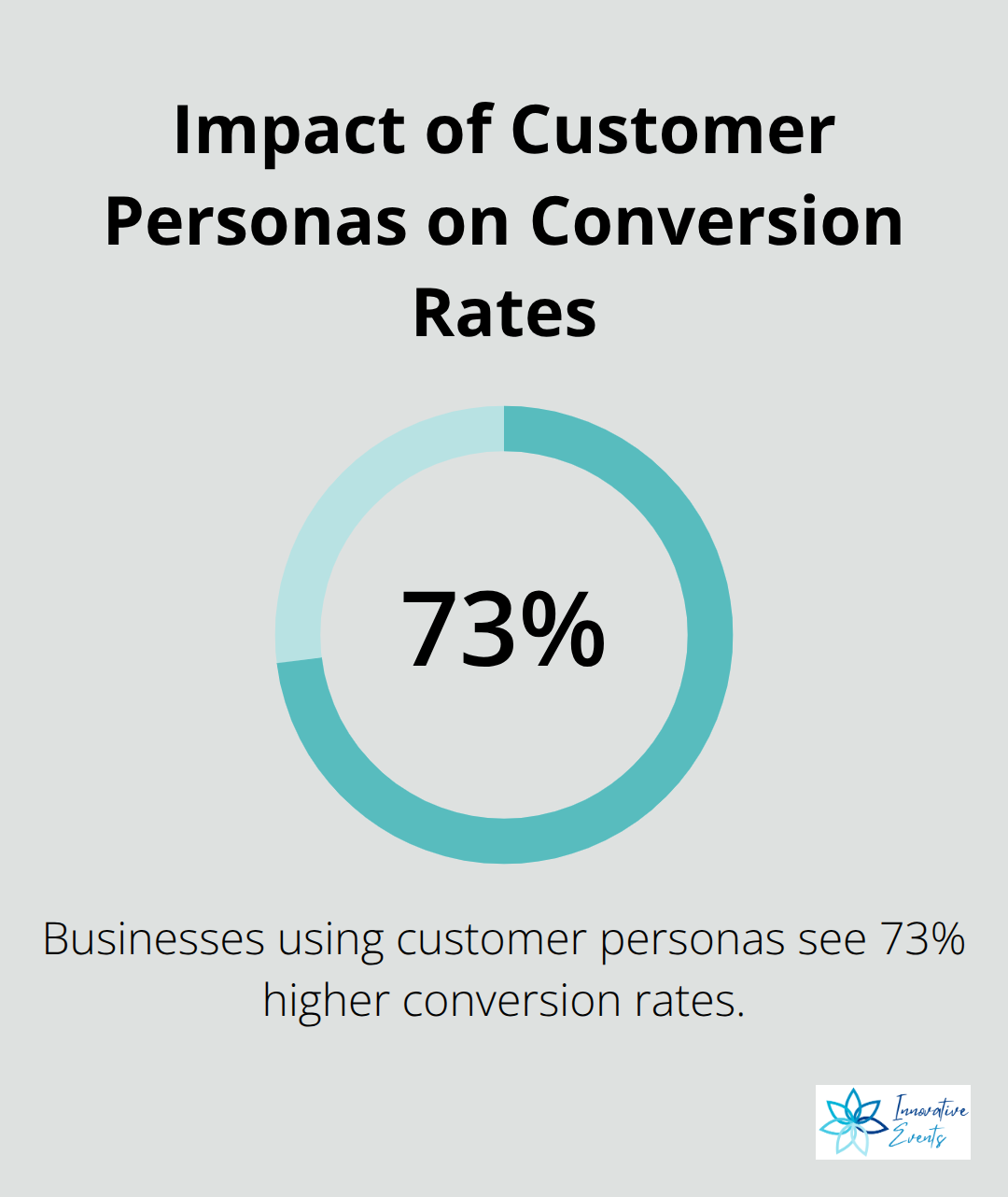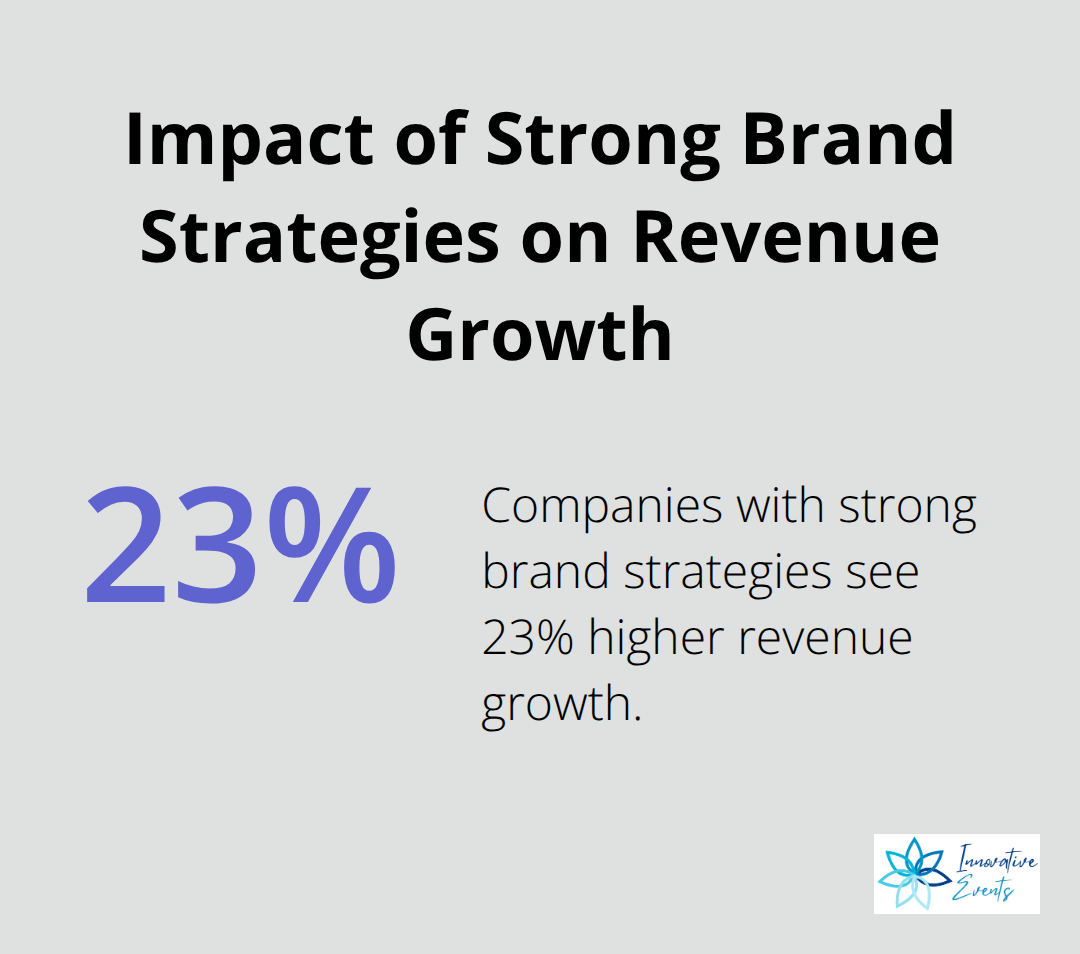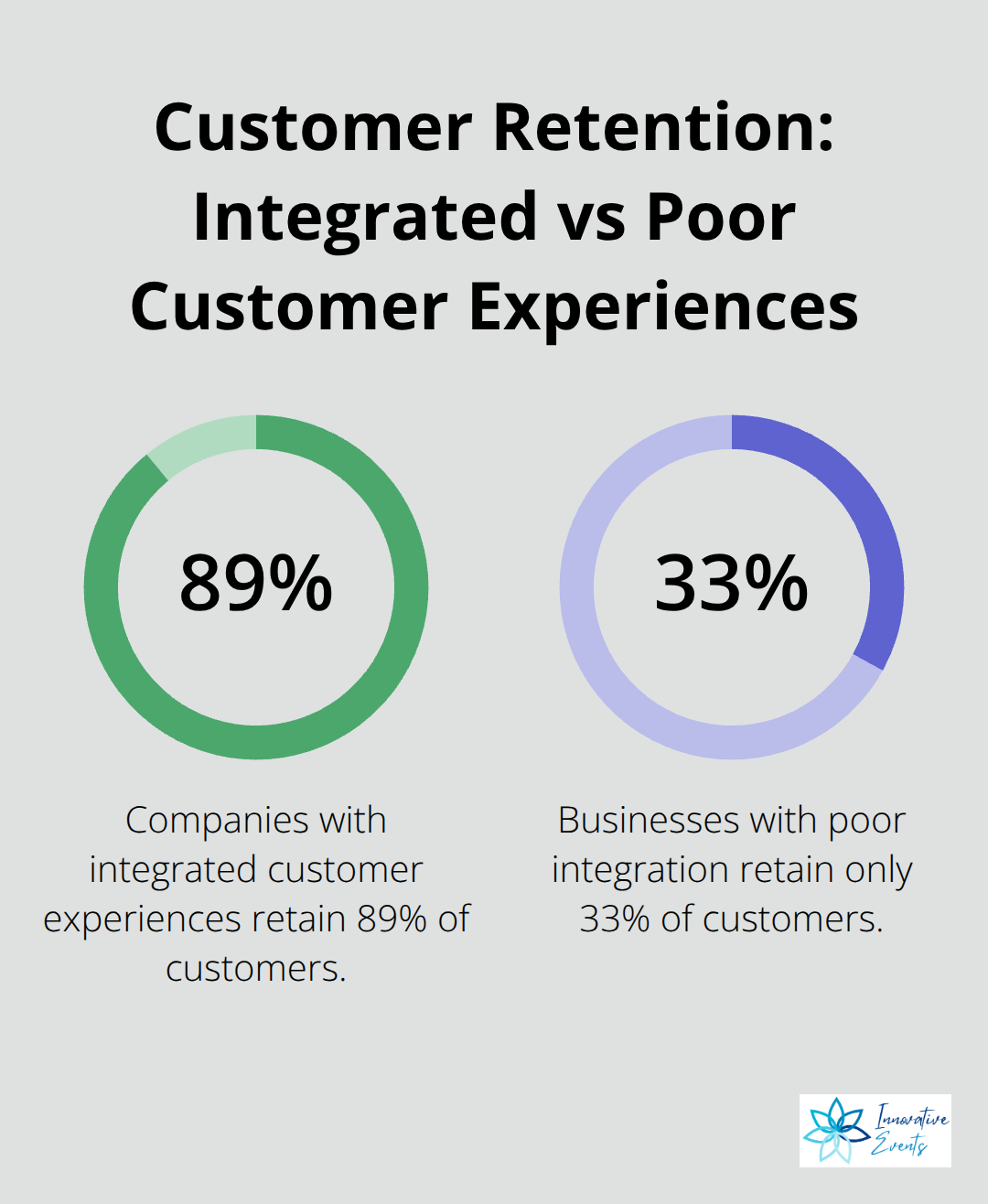Marketing and brand strategy form the foundation of successful business growth. These two interconnected approaches shape how companies connect with customers and build lasting relationships.
At Innovative Events, we see businesses struggle when they treat marketing and brand strategy as separate entities. Understanding what marketing and brand strategy truly means can transform your business approach and drive measurable results.
What Makes Marketing Strategy Work
Marketing strategy serves as your roadmap for customer connection and business growth. This comprehensive plan defines how you promote your products or services to target audiences, with focus on brand visibility, customer engagement, and revenue generation. The core components include market research, target audience analysis, competitive position, message framework, and channel selection. Without these elements that work together, businesses risk scattered efforts that waste resources and confuse customers.
Strategic Foundation vs Tactical Execution
Marketing strategy differs fundamentally from marketing tactics. Strategy operates at the organizational level, sets long-term direction, and defines your market position. Tactics are the specific actions you take to execute that strategy. For example, your strategy might focus on premium choice status for tech professionals, while your tactics include LinkedIn ads and industry conference sponsorships. A completed marketing strategy typically includes brand objectives, target audience personas, marketing channels, and key performance indicators. Strategy answers why you market, tactics answer how.
Research Powers Smart Decisions
Market research transforms guesswork into data-driven decisions. Start with customer surveys, focus groups, and behavioral analytics to understand preferences and pain points. Target audience analysis goes deeper than demographics. Create detailed customer personas that include purchase behavior, media consumption, and decision triggers. Businesses that use customer personas see 73% higher conversion rates compared to those that don’t. Competitive analysis reveals market gaps and position opportunities. Track competitor prices, messages, and channel strategies monthly.

Data Collection Methods That Work
Primary research gives you direct customer insights through surveys, interviews, and observation. Secondary research uses existing data from industry reports, government statistics, and competitor analysis. Social media analytics reveal customer sentiment and behavior patterns in real-time. Website analytics show how visitors interact with your content and where they drop off. Email metrics indicate message resonance and audience engagement levels. This research foundation prevents costly mistakes and identifies profitable opportunities that others miss.
With solid research data in hand, you can now build the brand strategy that will guide how customers perceive and connect with your business.
What Defines Your Brand Strategy
Brand strategy operates as the foundation that shapes every customer interaction with your business. This strategic framework defines your brand identity, core values, market position, and the emotional connections you create with customers. The key elements include brand purpose, personality, voice, visual identity, and value proposition. Companies with strong brand strategies see 23% higher revenue growth according to Lucidpress research. Brand strategy answers who you are as a business, while marketing strategy addresses how you communicate that identity to the world.

Position Against Competition Through Clear Differentiation
Brand positioning places your business in customers’ minds relative to competitors. Start with competitive analysis to identify market gaps and position opportunities. Define your unique value proposition when you combine functional benefits with emotional resonance. Patagonia positions itself as environmental activism meets outdoor gear, while Apple positions premium design meets intuitive technology. Differentiation techniques include price positioning, quality focus, customer service excellence, or innovation leadership. Test your positioning with customer interviews to validate that perception matches intention. Strong positioning drives purchase decisions when customers face multiple options.
Build Identity That Connects With Values
Brand identity encompasses visual elements, voice, and personality that customers recognize instantly. Create a visual system that includes logo, colors, typography, and imagery that reflects your brand personality. McDonald’s golden arches trigger immediate recognition across cultures. Brand values define what your business stands for beyond products or services. Nike champions athletic achievement and personal determination. Values alignment drives loyalty when consumers form relationships with brands that share their beliefs. Document your brand guidelines and train employees to maintain consistency across all touchpoints.
Maintain Consistency Across All Touchpoints
Inconsistent branding confuses customers and weakens market position. Establish clear brand guidelines that cover visual elements, tone of voice, and message frameworks. Train your team to apply these standards across every customer interaction. Monitor brand consistency through regular audits of marketing materials, social media posts, and customer communications. Companies that maintain consistent brand presentation see revenue increases up to 23% compared to those with inconsistent branding.
When your brand strategy foundation stands solid, you can align your marketing efforts to amplify that brand message across all customer touchpoints.
How Marketing and Brand Strategy Connect
Marketing and brand strategy alignment creates exponential business impact when companies execute it properly. Companies that align their marketing goals with brand messages see enhanced brand visibility and customer engagement, according to research. This alignment starts with shared objectives between marketing and brand teams. Marketing goals like lead generation and customer acquisition must reinforce brand values and position statements. If your brand positions itself as premium quality, your marketing campaigns should target high-value customers through luxury channels rather than discount platforms. Create shared KPIs that measure both marketing performance and brand health metrics simultaneously.
Integration Creates Seamless Customer Journeys
Customer experience integration demands that every touchpoint reflects a consistent brand identity while it achieves marketing objectives. Map your customer journey from awareness through purchase and identify where brand messages appear. Your website content, social media posts, email campaigns, and sales conversations must deliver a unified brand voice and personality. Companies with integrated customer experiences retain 89% of customers compared to 33% for businesses with poor integration. Train your sales team to communicate brand values during prospect conversations. Design marketing campaigns that reinforce brand position rather than contradict it.

Success Measurement Requires Dual Metrics
Success measurement across marketing and brand strategy requires you to track both short-term performance indicators and long-term brand equity metrics. Marketing metrics include conversion rates, cost per acquisition, and revenue attribution from specific campaigns. Brand strategy metrics focus on brand awareness, customer loyalty scores, and brand sentiment analysis. Track Net Promoter Scores monthly to measure brand advocacy alongside marketing qualified leads. Monitor social media sentiment while you analyze campaign click-through rates. Companies that measure both marketing ROI and brand equity see higher profit margins than those that focus on marketing metrics alone. Establish quarterly reviews that examine how marketing performance impacts brand perception and vice versa.
Final Thoughts
Marketing and brand strategy work together to drive business success when companies understand their interconnected nature. Marketing strategy provides the tactical roadmap for customer reach, while brand strategy defines identity and values. Proper alignment creates powerful customer connections that generate immediate revenue and long-term loyalty.
Implementation success depends on consistency and integration across all business functions. Start with clear brand position that differentiates you from competitors. Build marketing campaigns that reinforce brand values and measure both marketing performance metrics and brand health indicators to track progress.
Market research forms the foundation for understanding your target audience at a deeper level. Define brand purpose and values clearly, then align marketing tactics to support that foundation (this integrated approach builds stronger customer relationships). At Innovative Events, we help businesses create cohesive strategies that transform brand experiences through strategic marketing and exceptional event coordination.

